Toyota recently launched a new generation of Prius (Prius), which is built on the Toyota TNGA platform and upgraded in appearance, interior and security configuration. Netcom learned from the American Highway Safety Insurance Association (IIHS) that the Toyota Prius conducted a crash test at the agency. The new car was evaluated in the front of the 25%, 40% front, side impact, top impact and neck protection. The results were awarded the highest rating and received the title of “2016 Top Safety Pick+â€. The results announced this time show that the Prius has a good protection in all aspects of security protection.
This article refers to the address: http://
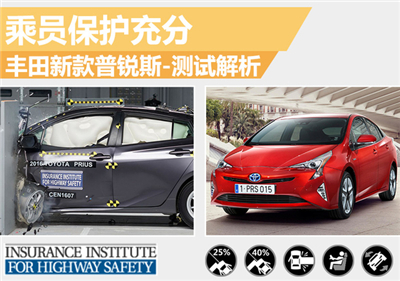
overall evaluation
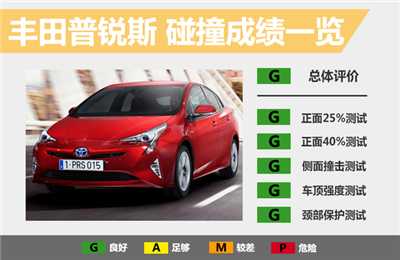
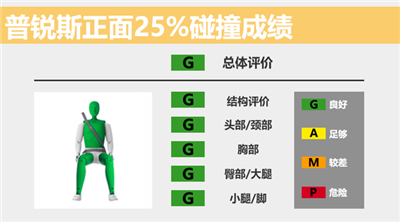
The model that participated in the crash test is the US version of the Toyota Prius. The IIHS crash test project is divided into 5 major frontal collisions, frontal 40% collisions, side collisions, top impacts and neck protection. The last four tests have achieved the best results. The rigorous test is to examine the frontal 25% small area collision test of the vehicle's protection of the occupants after the impact. The Toyota Prius has achieved the highest evaluation of "G" (good) in all five major tests, providing good protection for the occupants in the collision. The following Netcom will analyze the new car in the most demanding front 25% small area test. Performance in the middle.
Toyota Prius front 25% crash test
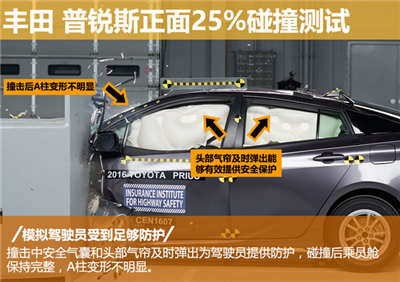
Since the impact force of the front 25% small area collision is concentrated in the range of about 25% of the left side of the front, avoiding the main front energy absorption area, which means that the buffer energy absorption area of ​​the vehicle under test is smaller; The energy squeezing longitudinal beam absorbs almost no collision energy. When impacted, the wheel is more likely to invade the cockpit. Parts such as the steering column, steering wheel and instrument panel are more easily displaced. After the impact, the Prius engine compartment is deformed by a large impact force due to the absorption of only part of the energy, and the deformation is not obvious.
During the impact, the Prius front airbag and the head safety air curtain can be ejected in time to form a protection, so that the occupant's head is in a safe position. However, due to the strong impact force, the body structure of the new car is obviously deformed. Although the door frame, steering column, instrument panel and other components have been invaded to varying degrees, they are all within the safe range, so the cockpit space has basically maintained a relatively good state. Among them, the upper door hinge column and the instrument panel of the Prius invaded 5 cm and 3 cm respectively, and the steering column was not deformed.

During the impact process, the inertial motion of the driver's head in the Prius is controlled quite well, without excessive offset, and the front airbag promptly pops out to provide sufficient protection for the head; the dummy's head touches the airbag. Although there is a rebound afterwards, the coverage of the air curtain on the head side is very good. The airbag and the air curtain cooperate to fix the dummy's head in a safe space, so as to avoid injury caused by touching the structure inside the vehicle.

After the collision, the driver's leg space of the new Prius is invaded by different degrees of deformation of the door frame, the hinge column and the lower part of the instrument panel. The lower hinge column and the brake pedal invade 3 cm and 4 cm respectively, but the driver's leg space Still in good condition, the driver's dummy's legs are fully protected.

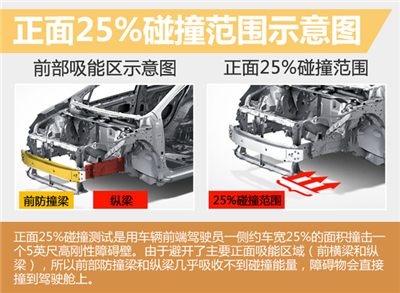
The small-area collision test means that the vehicle under test hits a 1.6-meter-high rigid barrier wall with an area of ​​about 25% of the vehicle width on the driver's side of the front end of the vehicle at a speed of about 64 km/h. Since the main front energy absorption area (front impact beam + longitudinal beam) is avoided, the front impact beam and the longitudinal beam absorb almost no collision energy, and the obstacle directly hits the cab. Parts that cause the wheels to become more intrusive into the cockpit and the steering column dashboard are easier to displace. At the same speed, the 25% offset frontal collision is more severely offset than the 40% offset, causing much more damage to the occupants in the car, and the required strength to the cockpit is much higher than the 40% offset collision.
JIANGMEN LEDERLIGHT LIGHTING Co.,LTD , https://www.lederlightcn.com